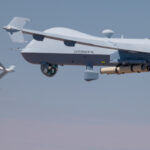
Science Applications International Corp. [SAIC] last Thursday reported higher earnings and sales in its third quarter, overcoming headwinds from the coronavirus pandemic. Sales increased 12 percent to $1.8 billion from$1.6 billion a year ago due to the acquisition earlier this year of the federal business of Unisys [UIS]. Excluding the acquisition, organic revenue was down nearly a percent due to an estimated $60 million impact from COVID-19 and the completion of certain contracts. The hits to the top line from…

 By
By 











